Stepping down into a basement no longer means descending a forgotten afterthought. Today’s basement stairs double as design statements, safety upgrades, and clever storage solutions, turning that in-between zone into a feature you’ll be proud to show off. From sleek floating treads framed in glass to budget-friendly paint tricks that brighten dim corners, the possibilities stretch as wide as your imagination and code requirements allow. Drawing on the newest material trends, lighting technology, and space-saving innovations, the following ideas reveal how a small footprint can carry big personality and function. Ready to rethink that overlooked flight? Let inspiration guide every step below.
1. Floating Glass-Railed Basement Stairs
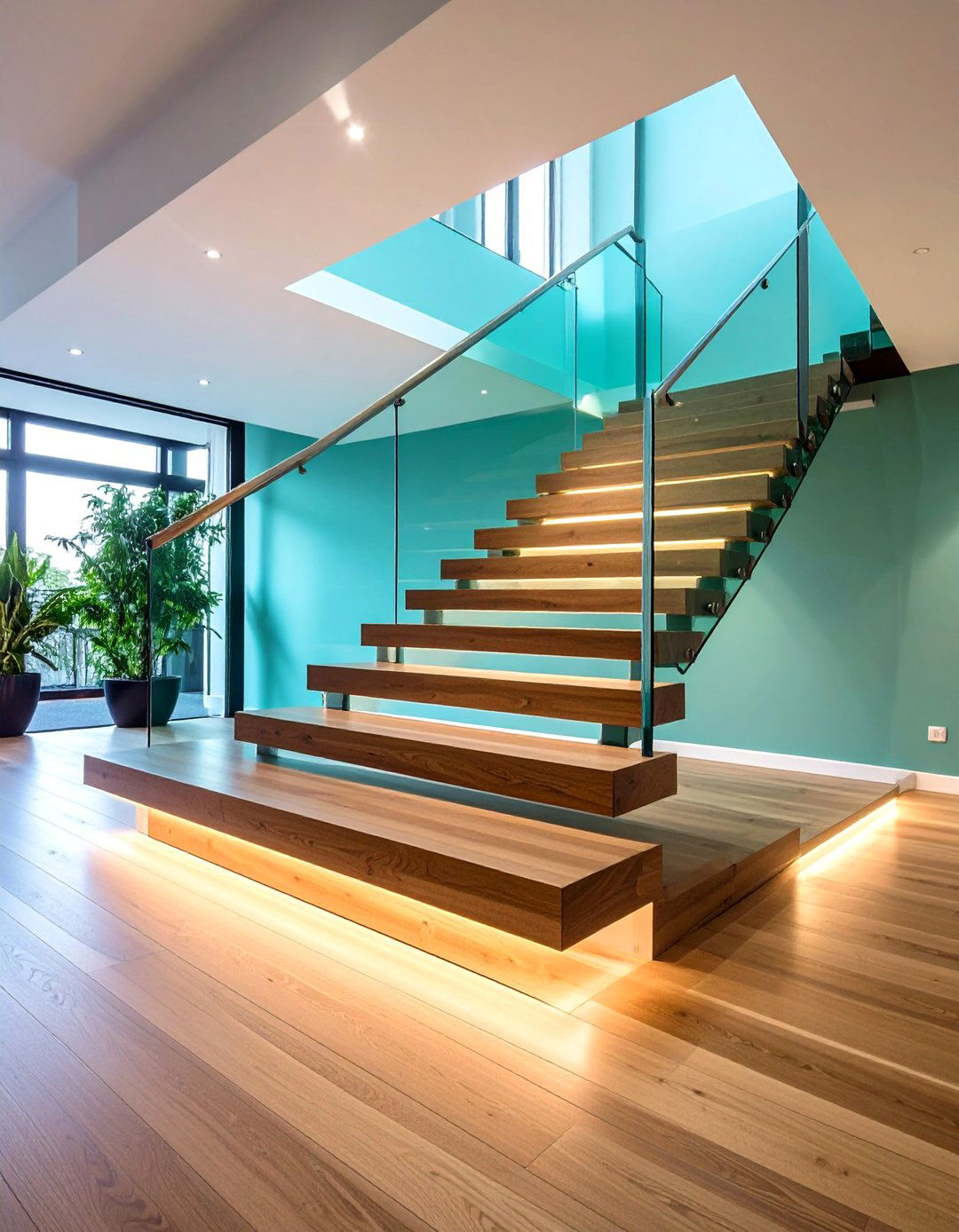
A breezy impression starts the moment glass meets timber in a floating basement stair. By cantilevering thick hardwood treads from a concealed steel stringer and enclosing the run with tempered glass panels, you eliminate bulky supports and let light flow deep into the lower level—especially helpful if only a narrow window well feeds the space. Pair the warm wood with a low-sheen clear finish so grain remains the star, then tuck LED strips under each tread for an almost weightless night glow. This configuration still qualifies as a closed guard when glass rises 36 inches above the nosings, satisfying residential code.
2. Warm Wood Closed-Riser Basement Stairs
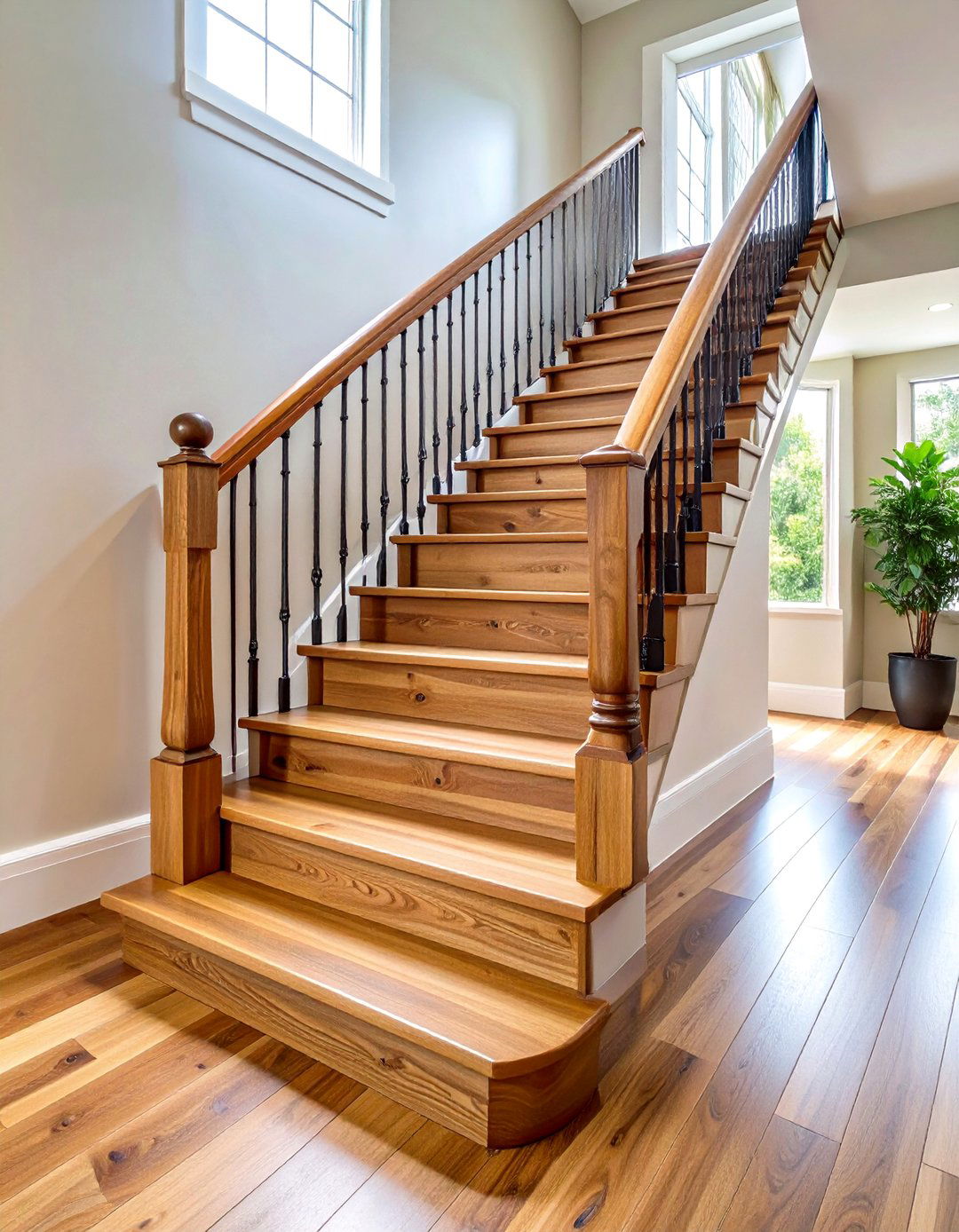
Unlike airy open risers, a closed-riser wood basement stair cocoons each step in the cozy character of solid timber, hiding the storage or mechanical guts that run beneath. Select durable white oak or ash if your basement contends with humidity swings, sealing all faces to minimize movement. Staining tread tops two tones darker than matching risers and skirting adds subtle visual rhythm and helps descending feet find edges in low light. For an understated rail, combine square wood newels with slender black metal balusters—still one of 2025’s strongest staircase style pairings. Keep tread depth at least 10 inches and consistent to stay code-safe.
3. Vibrant Painted-Tread Basement Stairs
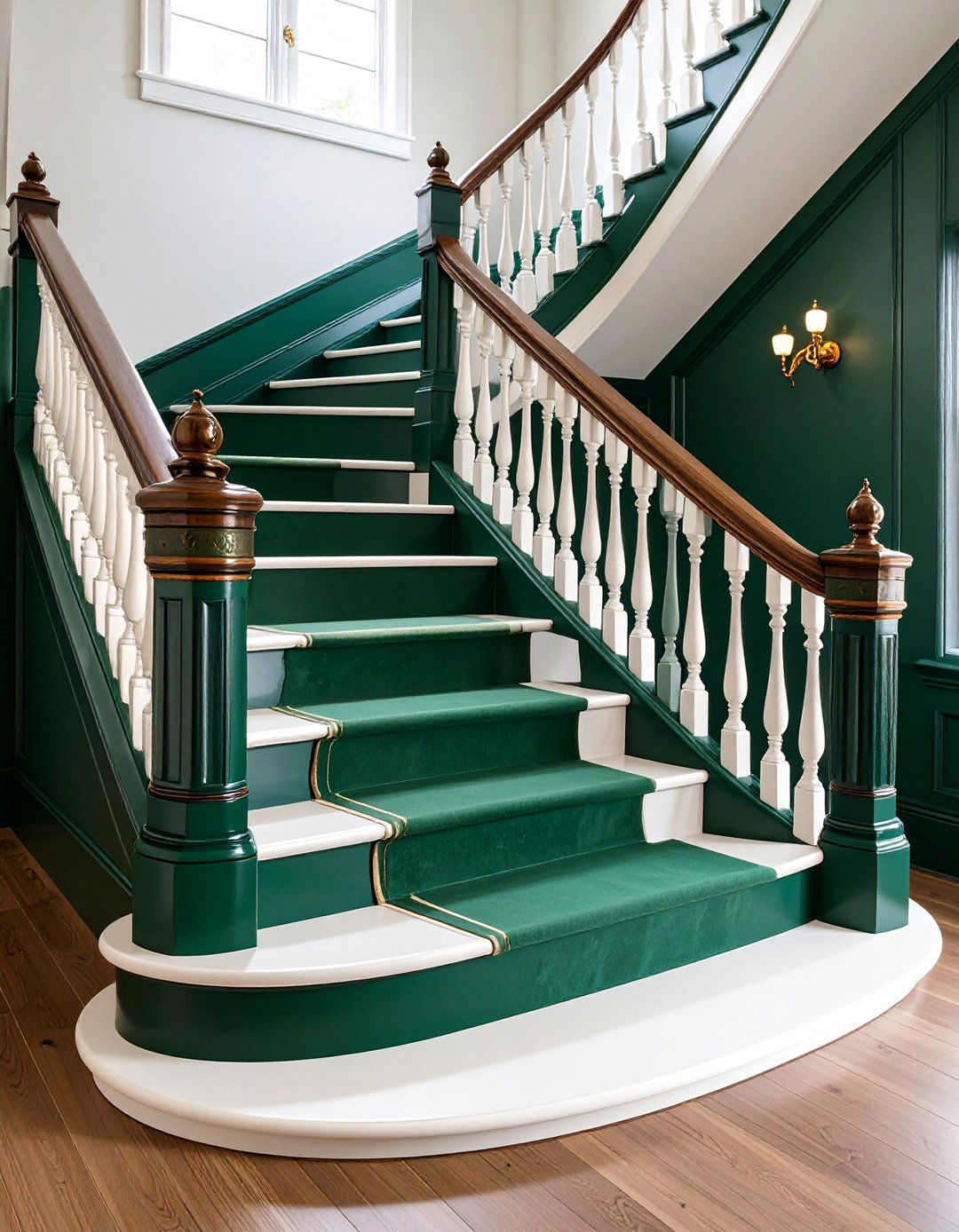
Brightening a dim descent can be as simple as paint, and basement stairs offer the perfect canvas. Consider brushing the risers in a moody forest green—a fresh swap for the overdone navy or sage many designers are phasing out—while leaving the treads a crisp off-white for contrast. A light-reflective value above 70 on the tread color boosts visibility and, when combined with a satin sheen, stands up to scuffs. Tape a 1-inch band of the wall color along each tread’s front edge to create a built-in “visual nosing” that guides footing in low lux. Finished with a water-based polyurethane, this makeover resists everyday scratches without adding thickness that might trip code.
4. Plush Runner-Clad Basement Stairs
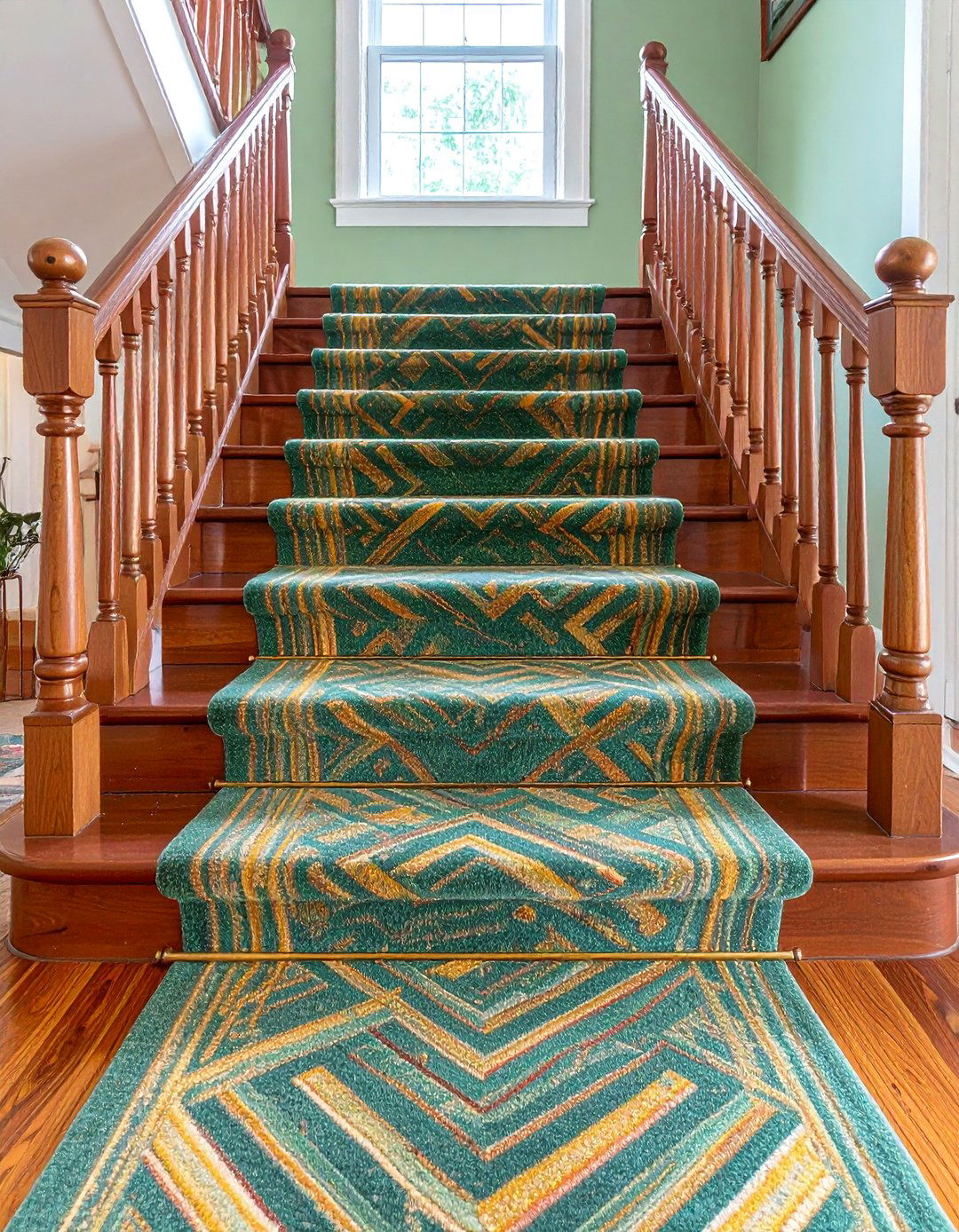
Certainly, nothing softens sound and steps like a well-fitted carpet runner hugging basement stairs from top to bottom. Choose a dense nylon or ECONYL® weave rated at 40-plus ounces for resilience; synthetics dry faster than wool if a dehumidifier fails. Wrap the runner over each tread and secure it with hidden staples and slim brass stair rods, maintaining a 1½-inch reveal of finished wood on both sides to keep the profile slim. For a playful twist, alternate a subtle herringbone at landings with a complementary stripe down the main run. A high-traction pad underneath meets anti-slip standards and cuts noise transfer to upper floors.
5. Under-Stair Bookcase Basement Stairs

Looking for literary flair? Transform the closed flank of your basement stairs into a built-in bookcase that steals no floor space. Frame shallow 8-inch-deep cavities between studs, then sheath the tread side with ¾-inch plywood to support adjustable shelves. For visual cohesion, paint shelves the same shade as risers, letting colorful spines supply contrast. Install low-voltage puck lights on a motion sensor so titles glow the moment someone starts down. Because the cavity sits outside the stair’s support path, you won’t compromise structure, yet you’ll gain up to 40 linear feet of storage in an average 13-step run easily.
6. Sleek Open-Riser Metal Basement Stairs

Take industrial chic downstairs with open-riser steel basement stairs powder-coated in matte charcoal. Welded plate stringers hide beneath each tread, letting a continuous metal spine slice gracefully through the space. To temper acoustic harshness, bolt 1½-inch reclaimed oak planks atop the steel and apply wax finish for a touch of warmth. Building code allows open risers as long as the gap doesn’t let a 4-inch sphere pass—simply weld a narrow kick plate at the back of each tread to comply without sacrificing transparency. Add a minimalist cable rail anchored to steel posts for an edgy guard that keeps sightlines open while staying trend-forward.
7. LED-Lit Tread Basement Stairs
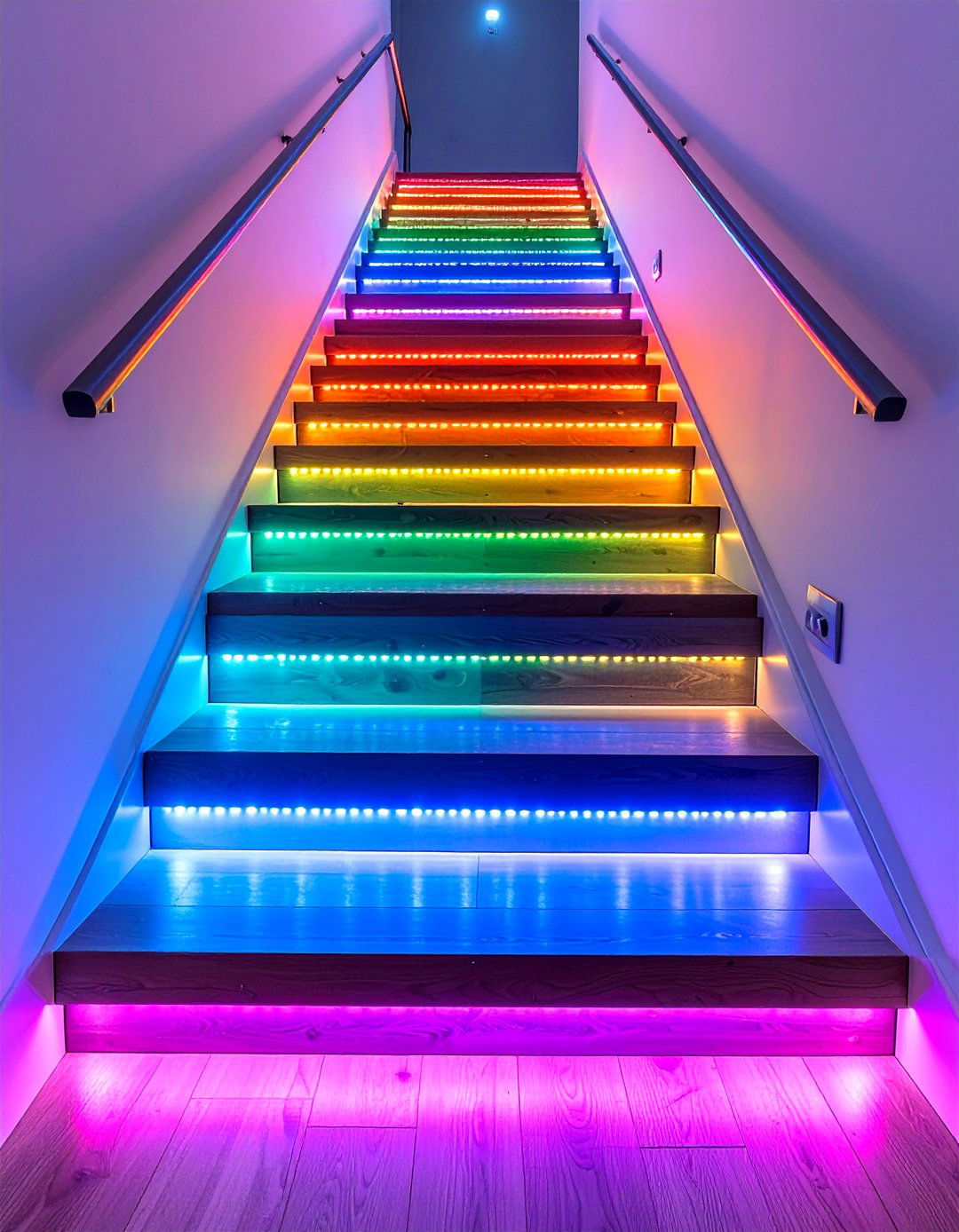
As shadows gather, integrated LEDs can transform otherwise forgettable basement stairs into a welcoming runway. Mount flexible 2700 K tape light in routed channels under each tread nosing; a 45-degree anodized aluminum diffuser ensures the beam grazes the riser evenly and avoids glare. Tie the strip to a motion sensor at the top landing so illumination follows you down and automatically shuts off after a set interval to conserve energy. Choose strips rated IP65 or better to protect diodes from the occasional damp draft, and keep the driver accessible behind a removable stair skirt for hassle-free maintenance. Even in a power outage, low-wattage backup batteries can keep the path safely lit.
8. Compact Spiral Basement Stairs

Despite tight footprints, a spiral layout can drop you into the basement without eating the room above. Order a modular kit with a 48-inch-diameter powder-coated steel center pole, wedge-shaped beech treads, and a simple round handrail you can assemble in an afternoon. Spirals are permitted by the IRC for secondary access when diameter is 5 feet or less and clear tread depth is at least 7½ inches, so confirm your stair serves non-egress needs only. Add grip-tape strips at the outer walking line for safety, and hang a single pendant inside the column to cast a sculptural shadow swirl after dark.
9. Drawer-Riser Storage Basement Stairs
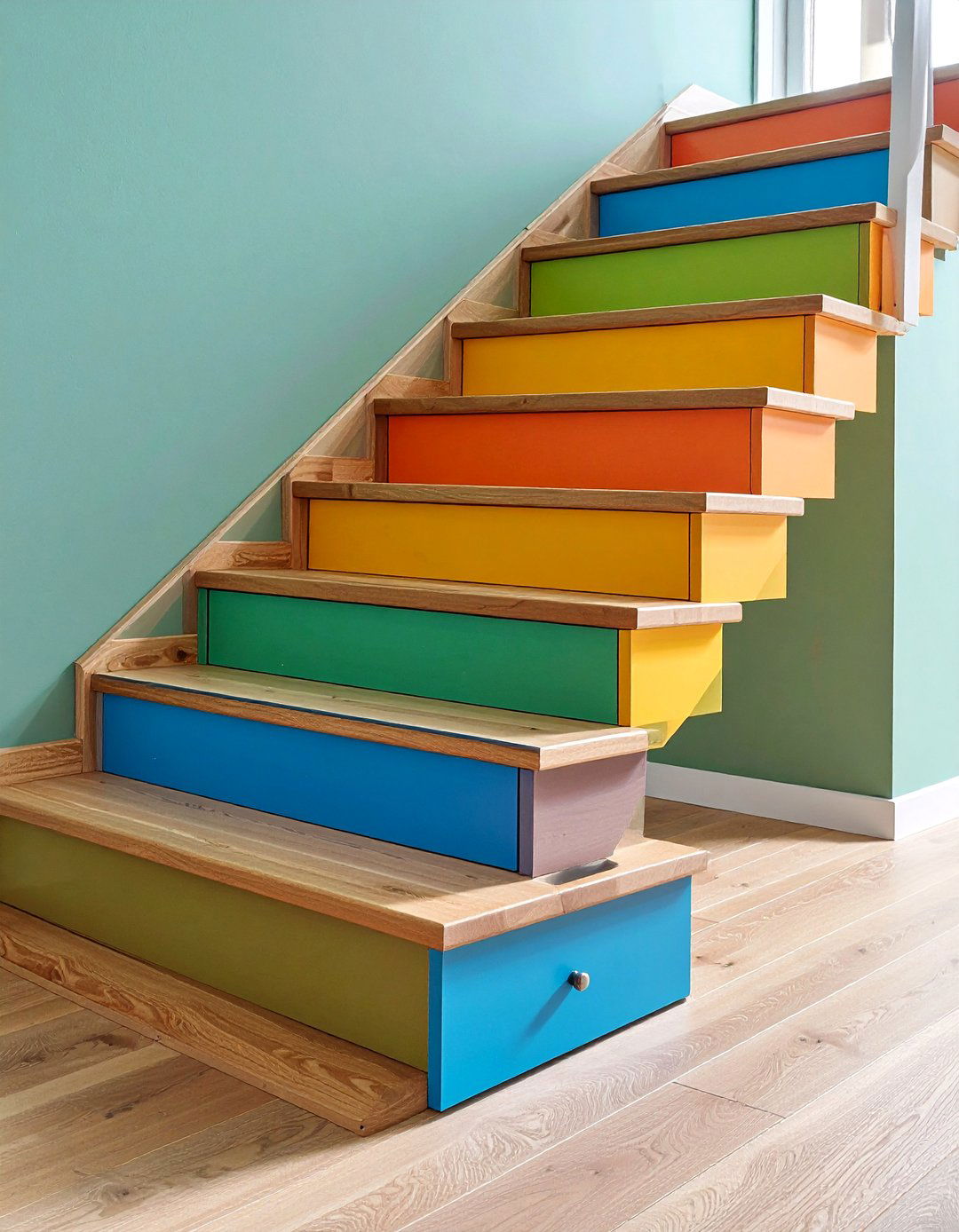
Another clever twist turns basement stair risers into pull-out drawers, perfect for tucking away holiday décor or workout gear. Build each drawer box from ½-inch Baltic birch and mount on 100-pound full-extension slides anchored to the stringers. Keep drawer faces flush with painted risers, adding finger grooves so hardware won’t snag toes. Fit dividers to sort items by season, then label the underside of each tread for quick inventory. Because drawers remove structural riser material, reinforce every third tread with a steel angle before you cut, and limit drawer depth to 7 inches to preserve stair integrity—for long-term reliability.
10. Industrial Concrete-and-Steel Basement Stairs
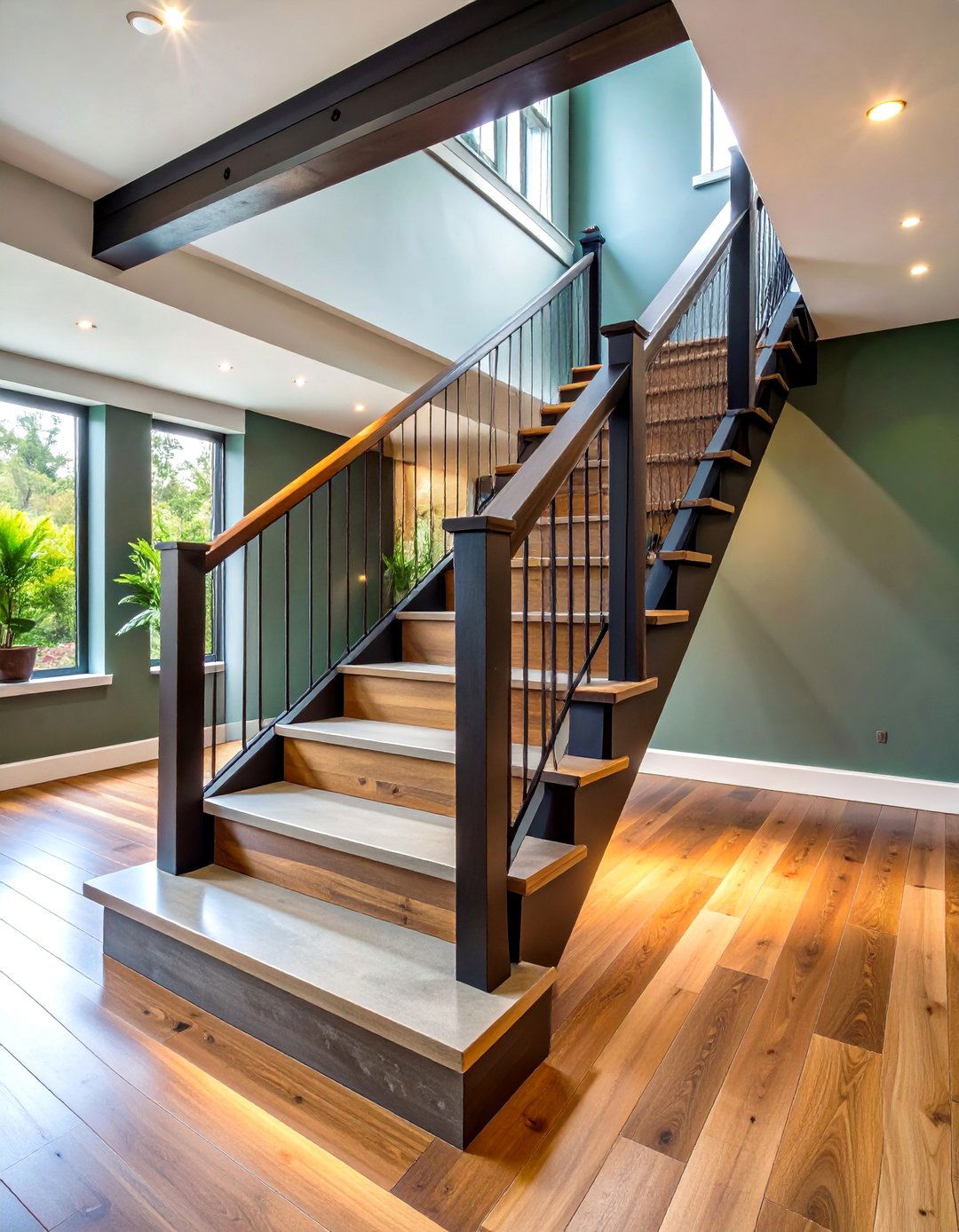
Owing to their raw durability, cast-in-place concrete treads combined with hot-rolled steel plate stringers give basement stairs an unmistakable loft vibe. After stripping forms, polish the concrete to 400 grit for a soft matte sheen and seal with a penetrating silicate hardener that resists moisture wicking. Attach ¼-inch blackened plate stringers on either side using expansion anchors set in the slab, leaving a slim 3-inch gap from walls so the run appears to float. Temper the industrial feel with a reclaimed barn-beam handrail that’s torch-brushed for texture. This robust assembly shrugs off basement humidity swings and exceeds 300-pound load requirements for residential steps.
11. Code-Friendly Wide-Tread Basement Stairs

From aging knees to toddlers’ first steps, wider basement stair treads make everyone feel steadier. Extend each run to 11 inches deep, the maximum allowed before you must increase overall rise, and keep risers a gentle 7¾ inches high to decrease trip risk. Where existing framing limits length, steal an extra inch by adding a bullnose overhang and insetting the stringer. Finish treads with a beveled aluminum stair-edge strip so plywood cores stay protected from kicks. Pair the generous steps with a continuous 1½-inch-diameter rail set 34 inches above every nosing, giving smaller hands a secure grip without sacrificing modern proportions.
12. Motion-Sensor-Lighted Basement Stairs

As research into falls shows, many basement mishaps happen when occupants fumble for a light switch. Swap traditional wall switches for dual-circuit motion sensors that trigger both tread LEDs and a low-glare wall sconce whenever someone approaches either landing, then fade gently as traffic clears. Hard-wire the sensors to the lighting transformer for seamless control, and add a Wi-Fi bridge if you want app-based scheduling. Thin-profile sensors mounted 48 inches above the first and last treads stay out of accidental kicks yet still catch movement. The automatic illumination can shave 20 % off yearly stairwell energy use compared with manual switching, according to recent lighting audits.
13. Bold Accent-Wall Basement Stairwell
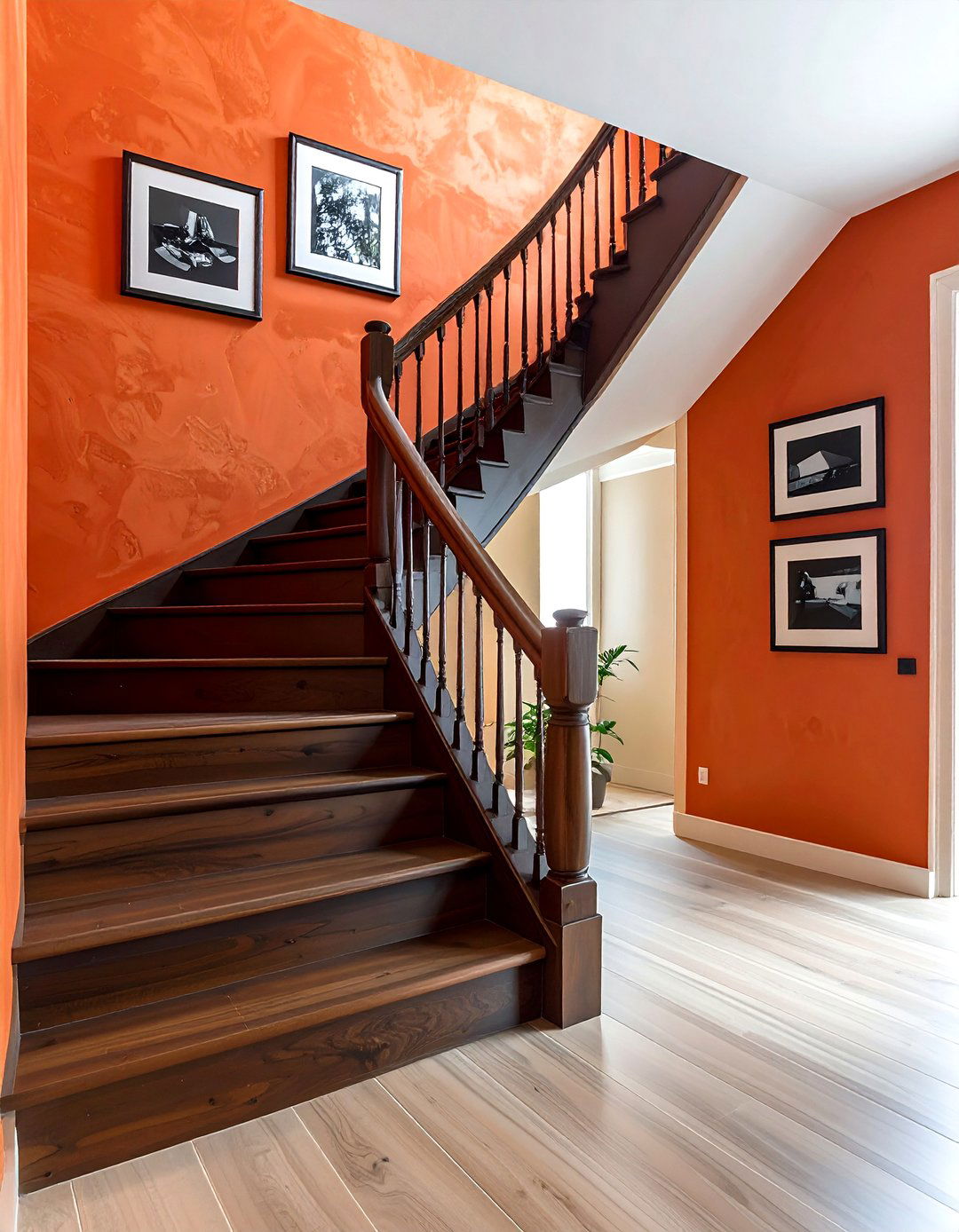
Surprisingly, a single saturated stairwell wall can redefine the entire basement approach. Cover the long side of the flight in a warm clay-terracotta microfiber plaster that diffuses scant daylight instead of absorbing it, then paint opposite walls in a complementary muted cream. Choosing an earthier tint avoids the cool bright whites designers say are losing favor and instantly injects cozy drama into otherwise blank drywall. Anchor the palette by staining the stair handrail a mid-tone walnut, creating harmony between wood grain and rich color. Finally, hang a linear gallery of black-and-white family photos so the hue frames each frame and turns everyday transit into a curated moment.
14. Mixed-Material-Railing Basement Stairs
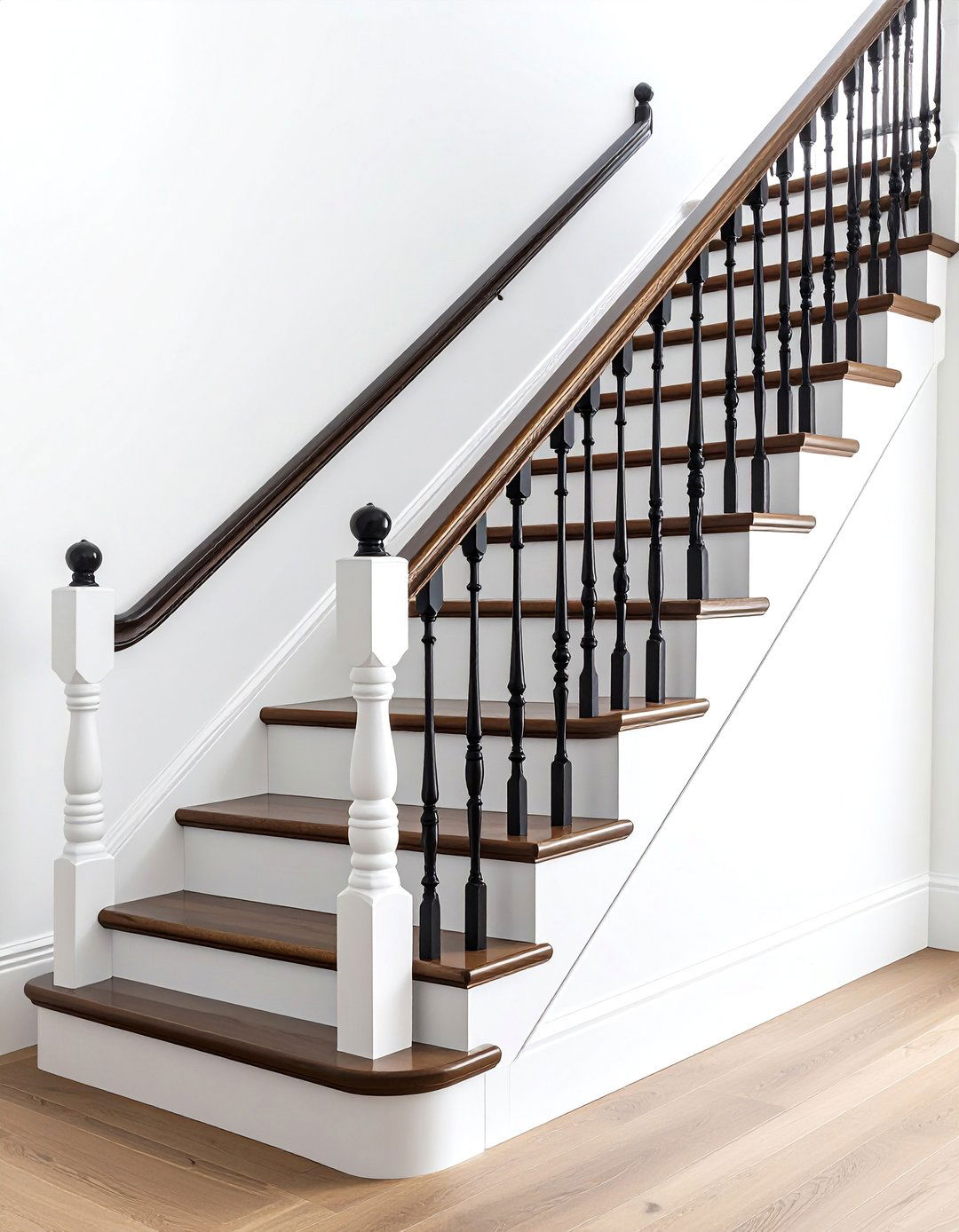
That blend of warmth and edge continues when you combine wood rails with slender metal spindles on basement stairs—a style topping 2025 trend lists. Mill 2×3 white-oak planks into a rectangular handrail, ease the edges, and finish them in a low-VOC oil that deepens grain without gloss. Then install pre-drilled steel shoes into each tread for ½-inch round black balusters spaced just under 4 inches on center, meeting guard requirements while maximizing sightlines. Accent the contrast by staining newel caps three shades darker than the railing, and terminate the rail in a curved return so little fingers can’t snag clothing. The resulting mix elevates even builder-grade stairs into a bespoke architectural focal point.
15. Slip-Resistant-Finish Basement Stairs

By the time wet umbrellas and muddy boots reach the basement, slippery treads can become a hazard. Roll on a clear anti-slip nano-grit coating formulated for wood or concrete and rated to increase dynamic coefficient of friction to at least 0.6, the threshold recommended for stairs. For painted surfaces, de-gloss first with 150-grit sandpaper so the coating bonds. Tape a neat 2-inch band of non-skid just behind each nosing to preserve the look of stained wood while protecting the main walking zone. Because many products cure within eight hours, you can coat after dinner and regain use by morning without carrying laundry out the front door.
16. Integrated Child-Gate Basement Stairs
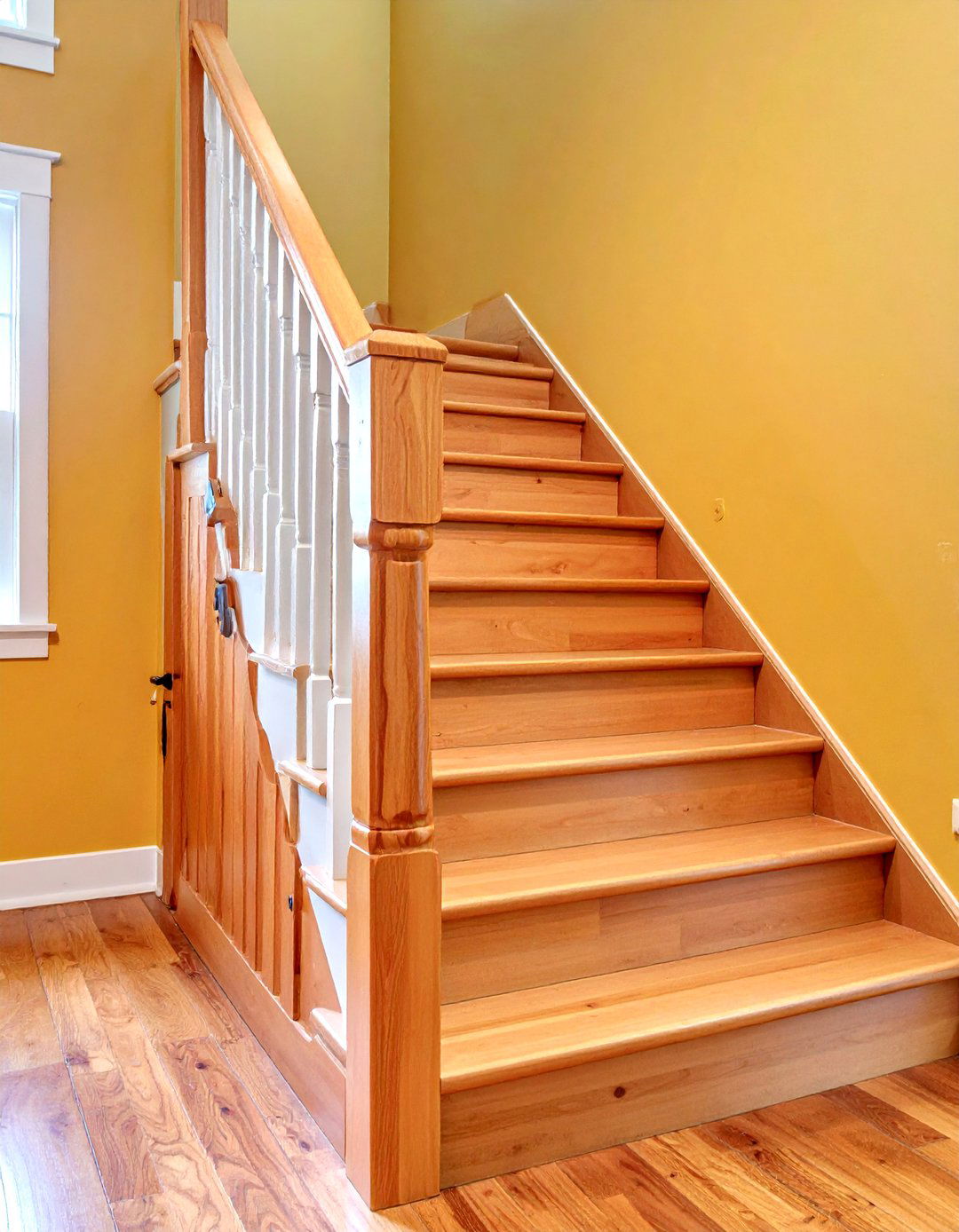
For families, basement stairs often sit near play areas, so a built-in child gate preserves peace of mind without clutter. Frame the first newel post wider, then rout hidden barrel hinges into its back edge to swing a 36-inch-tall wood-slat gate that matches balusters when closed. Magnetic push-latches keep little hands from unlocking the gate, while adults can open it one-handed. Position the latch side flush with the adjacent wall so there’s no floor track to trip over. When parenting needs pass, remove the gate and install a matching trim board, leaving pre-finished hardware mortises invisible. The discreet safety feature keeps design lines intact while meeting barrier needs for years.
17. DIY Iron-Baluster Basement Stairs

Take weekend ambition downstairs by swapping dated wood spindles for sleek square iron balusters on your basement stair rail. First, cut the old balusters flush at both ends and extract them, then drill ½-inch holes centered ½ inch from each tread’s back edge. Insert shoes, add a dab of epoxy, and slide in the new metal, spinning slightly to seat the adhesive. Set the pattern three-one-three so negative space feels graphic but not sparse. Because iron weighs more than pine, reinforce the underside of the handrail with hidden steel flat bar before reinstalling, and touch up screw heads with black enamel for a seamless finish.
18. Alternating-Tread-Ladder Basement Stairs
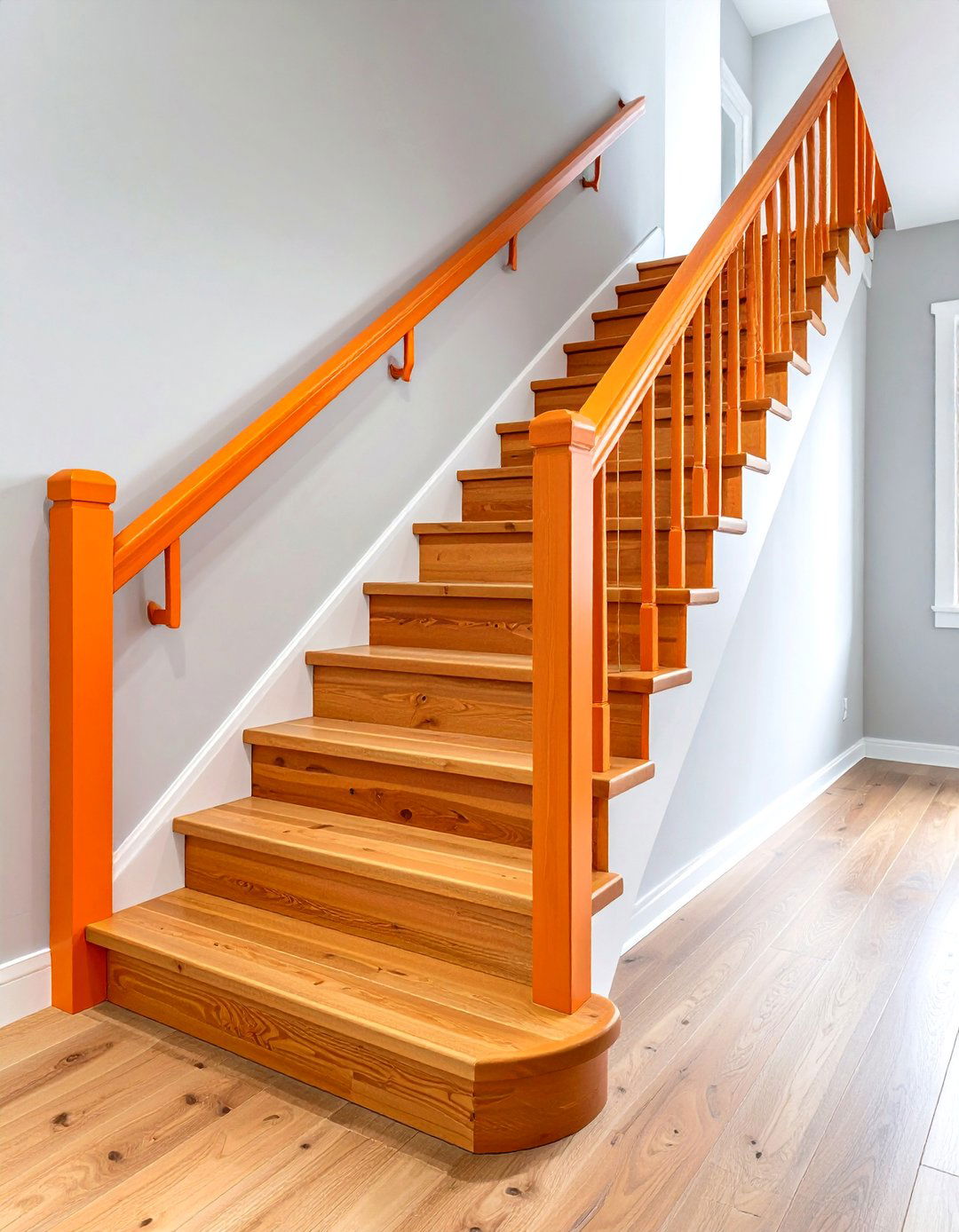
When a furnace closet leaves just inches for access to a hobby room, an alternating-tread ladder earns its keep. These steep hybrid stairs offset each tread so only one foot uses each side, cutting horizontal run roughly in half. The 2021 IRC allows alternating-tread devices where they’re not the sole egress, provided projected tread depth is at least 8½ inches and handrails mount on both sides. To soften the climb, mill each tread from 1¼-inch maple and round over the front edge. Finish the side rails in bold safety orange so guests instantly read which foot lands first without misstepping in the narrow shaft.
19. Eco-Friendly Recycled-Runner Basement Stairs
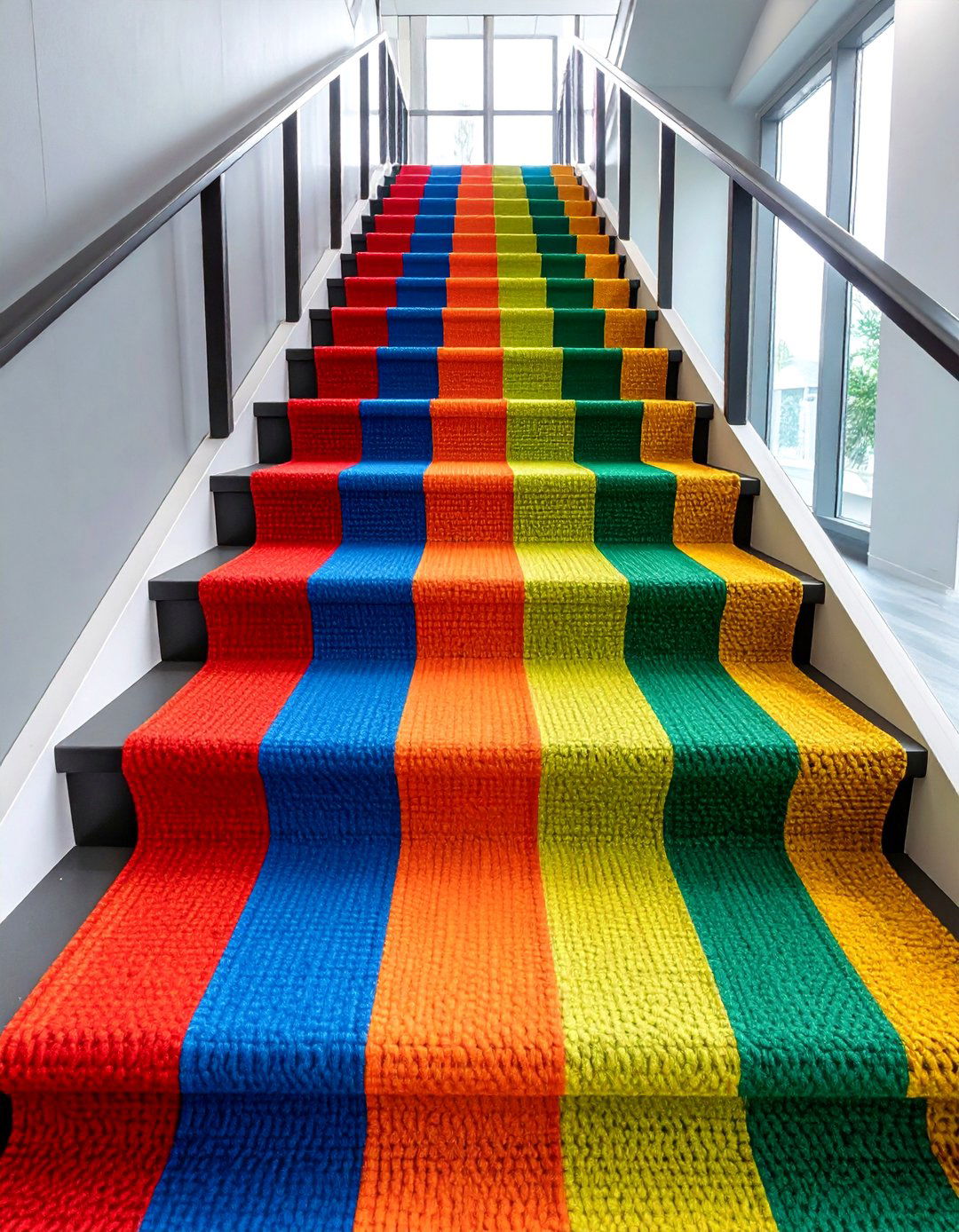
With sustainability taking center stage, outfitting basement stairs with a runner woven from recycled fishing nets or plastic bottles makes a quiet yet constant eco-statement. ECONYL® nylon fibers, for instance, offer the softness of virgin material while diverting waste from oceans and landfills. Choose a subtle salt-and-pepper weave that masks dirt between vacuum sessions and complements both painted and stained treads. Because recycled yarns are solution-dyed, color penetrates the core, boosting fade resistance under stair lights. Bind edges in a matching recycled polyester tape, and install with low-VOC adhesive strips instead of traditional tack strips so both the runner and the air quality stay clean.
20. Living-Green Plant-Shelf Basement Stairs

Finally, breathe vitality into the descent by integrating a staggered plant shelf along the outer wall of your basement stairs. Anchor 4-inch-deep powder-coated steel ledges between stringers and drywall, spacing them to match tread rhythm so cascading pothos or string-of-turtles vines echo the stair’s slope. Low-light-happy ZZ or snake plants thrive even in basement conditions, needing watering only every few weeks. Add a slim drip edge to each shelf to stop runoff, and install a single grow-light strip concealed behind the handrail for consistent photos. The living greenery softens hard lines, oxygenates stale basement air, and greets visitors with an unexpected shot of nature.
Conclusion:
Basement stairs no longer have to lurk in utility mode; they can safeguard, store, illuminate, and inspire all at once. Whether you lean toward glass-draped minimalism, reclaimed-wood warmth, or clever riser drawers, each idea above proves that every tread is a chance to add comfort, personality, and long-term value. By respecting code dimensions, choosing materials suited to below-grade conditions, and layering in light or color, you create a stairway that welcomes rather than warns. Let the next steps you take downstairs remind you that even the most ordinary passage can become a highlight of home life every day.



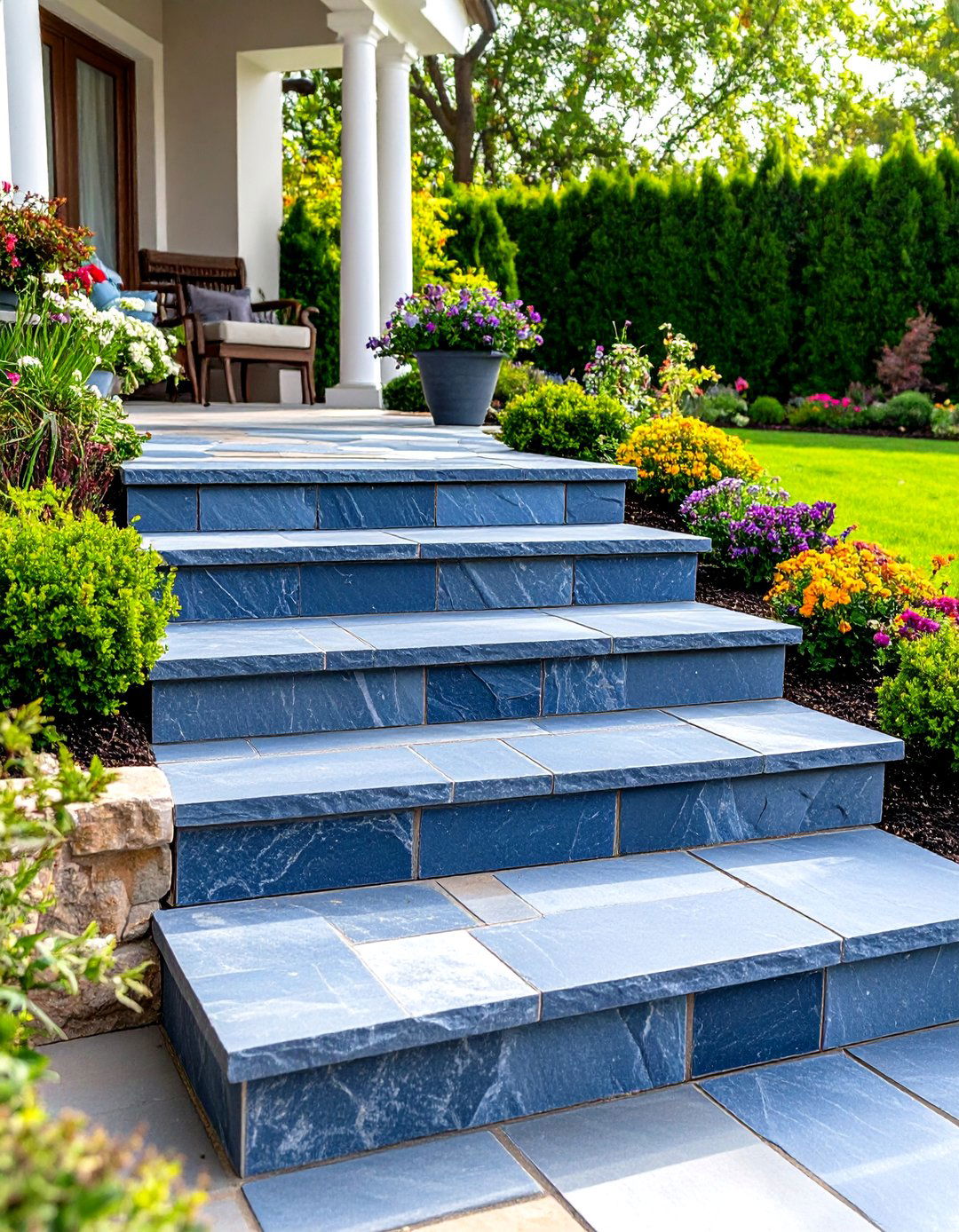
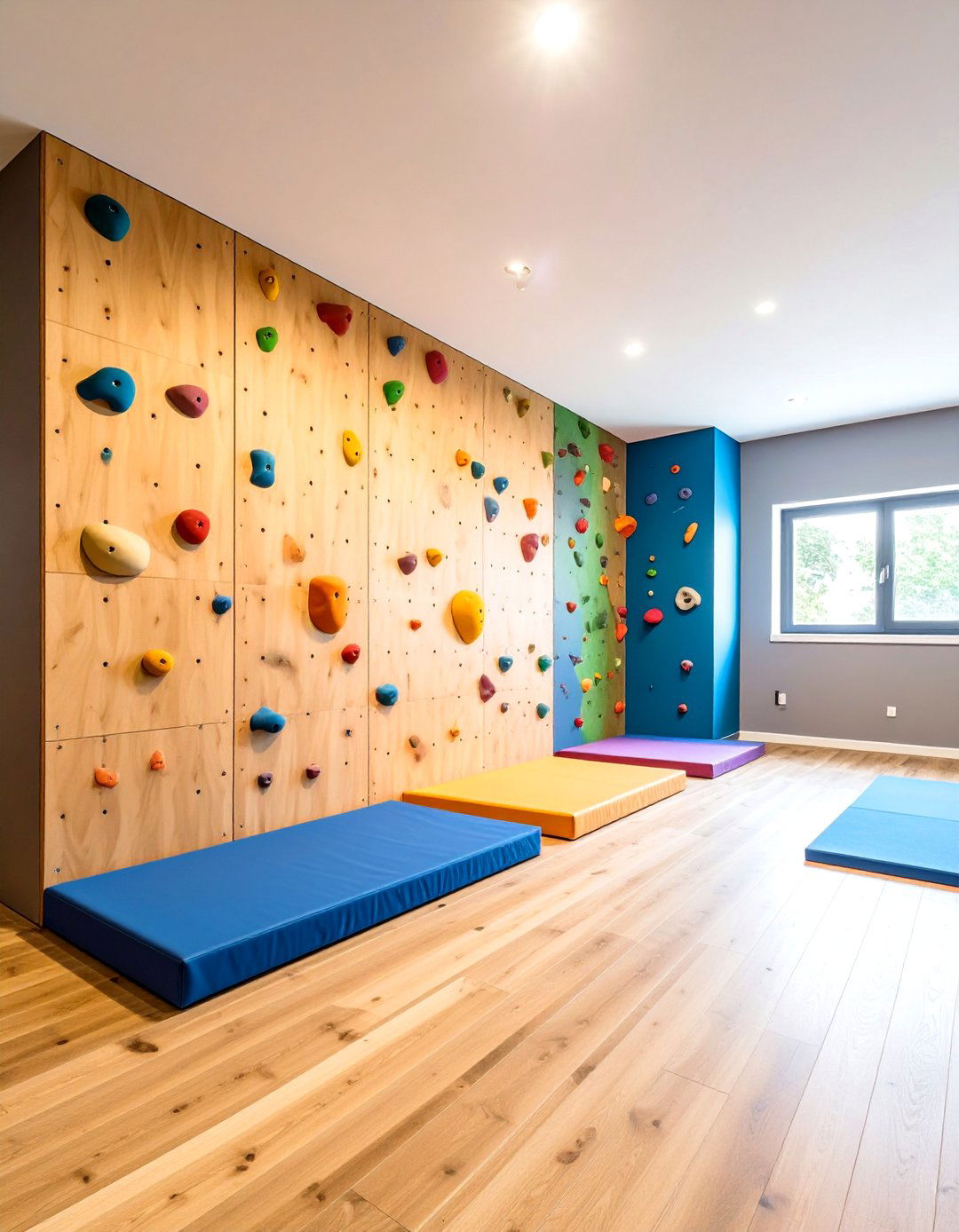

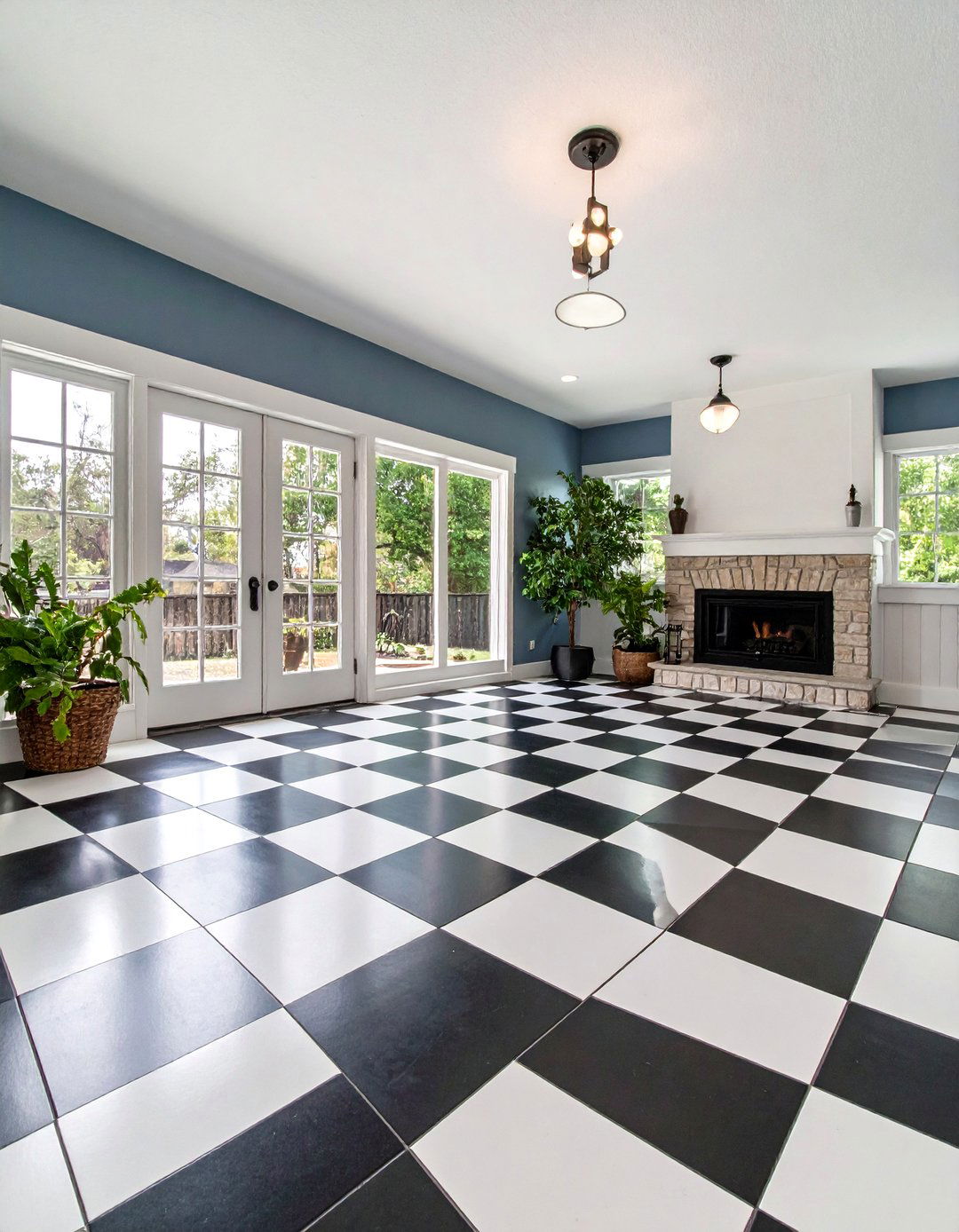

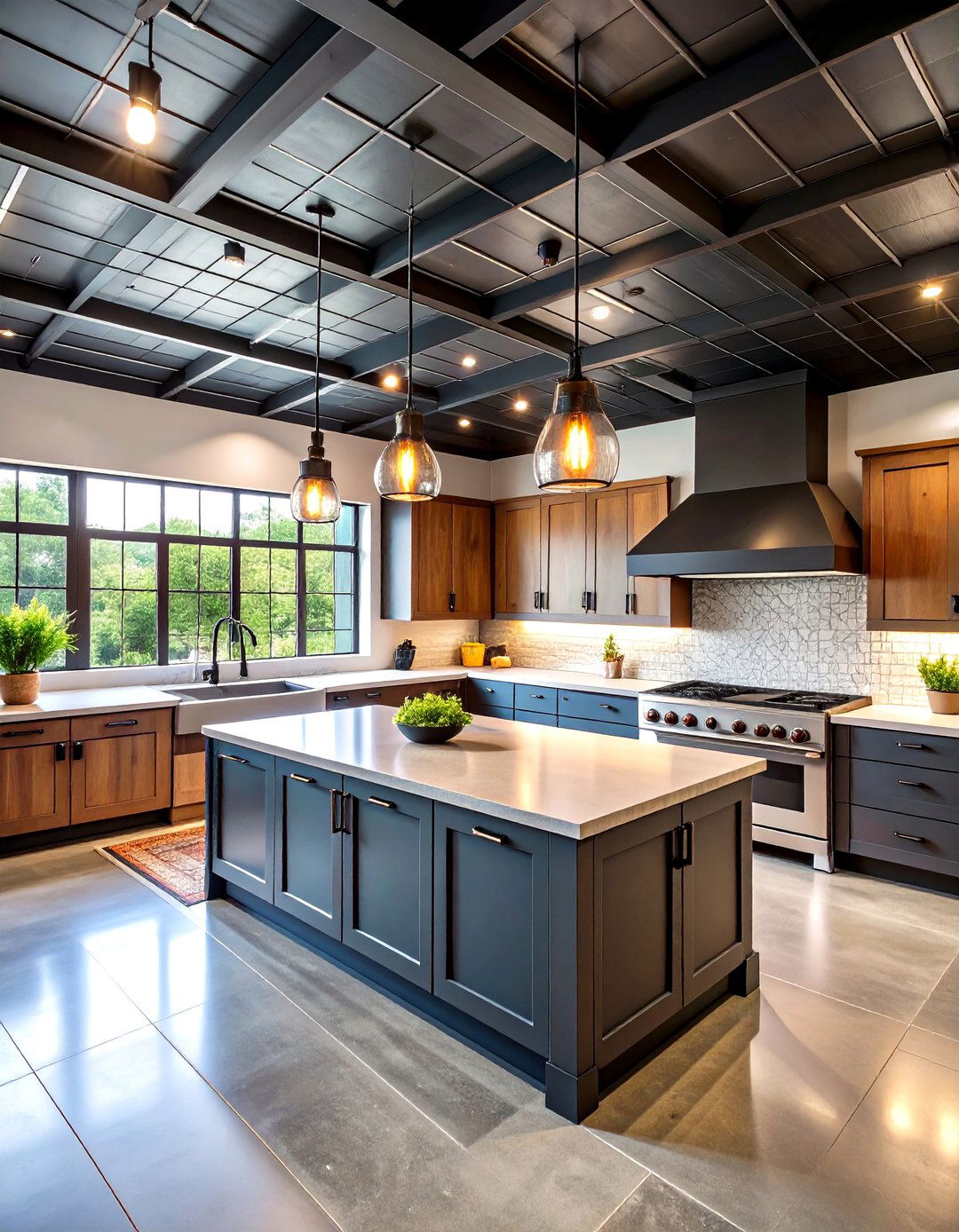
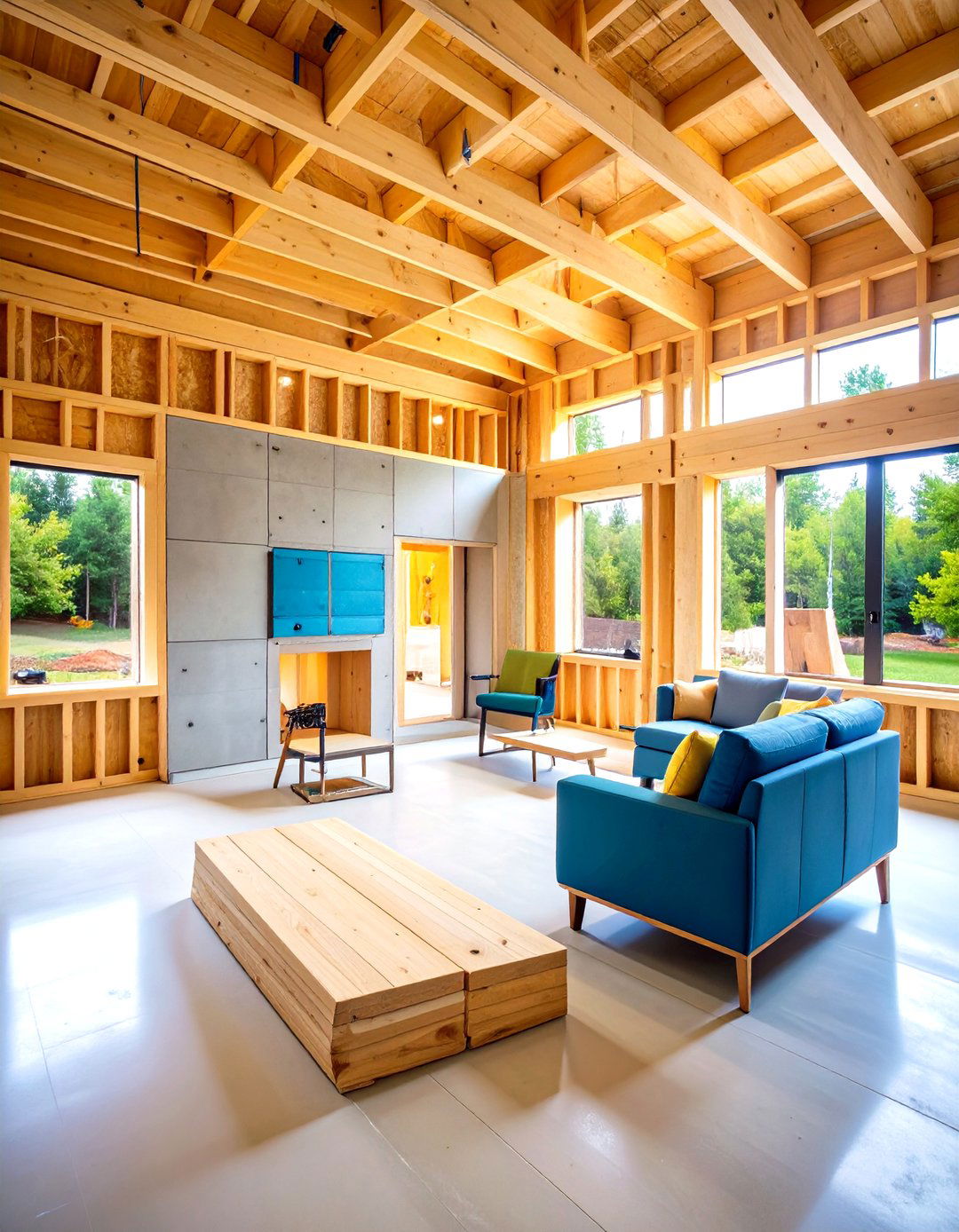
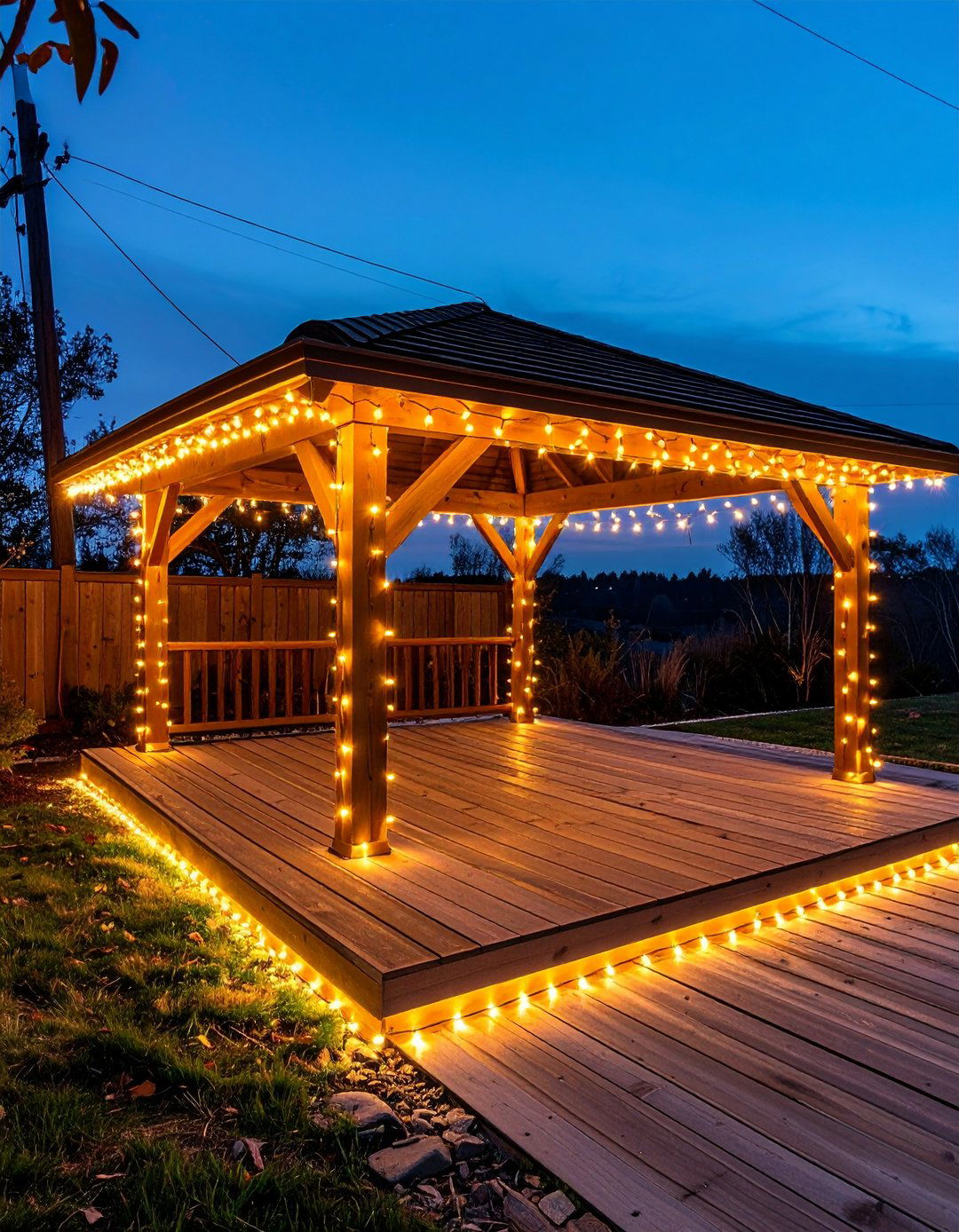

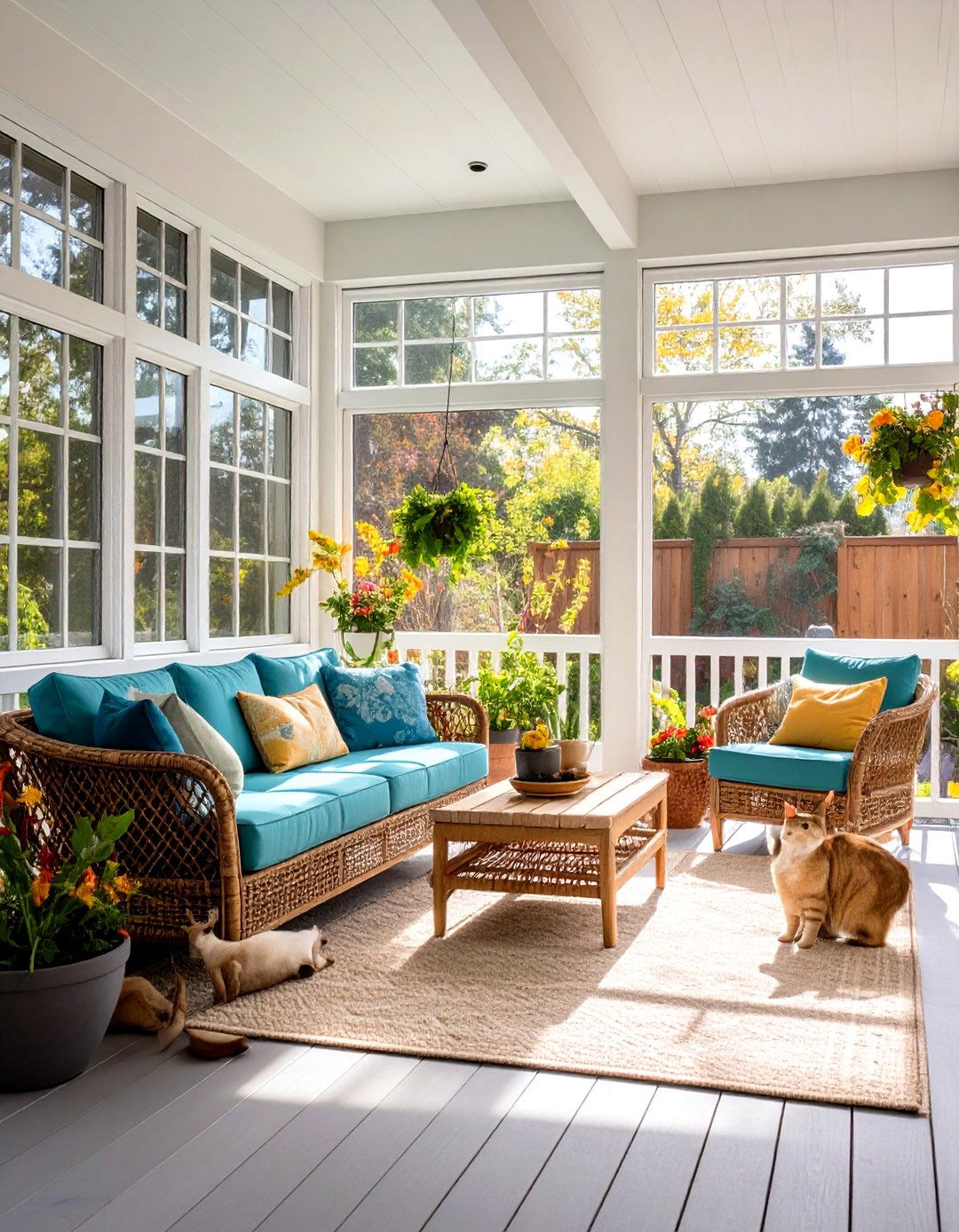
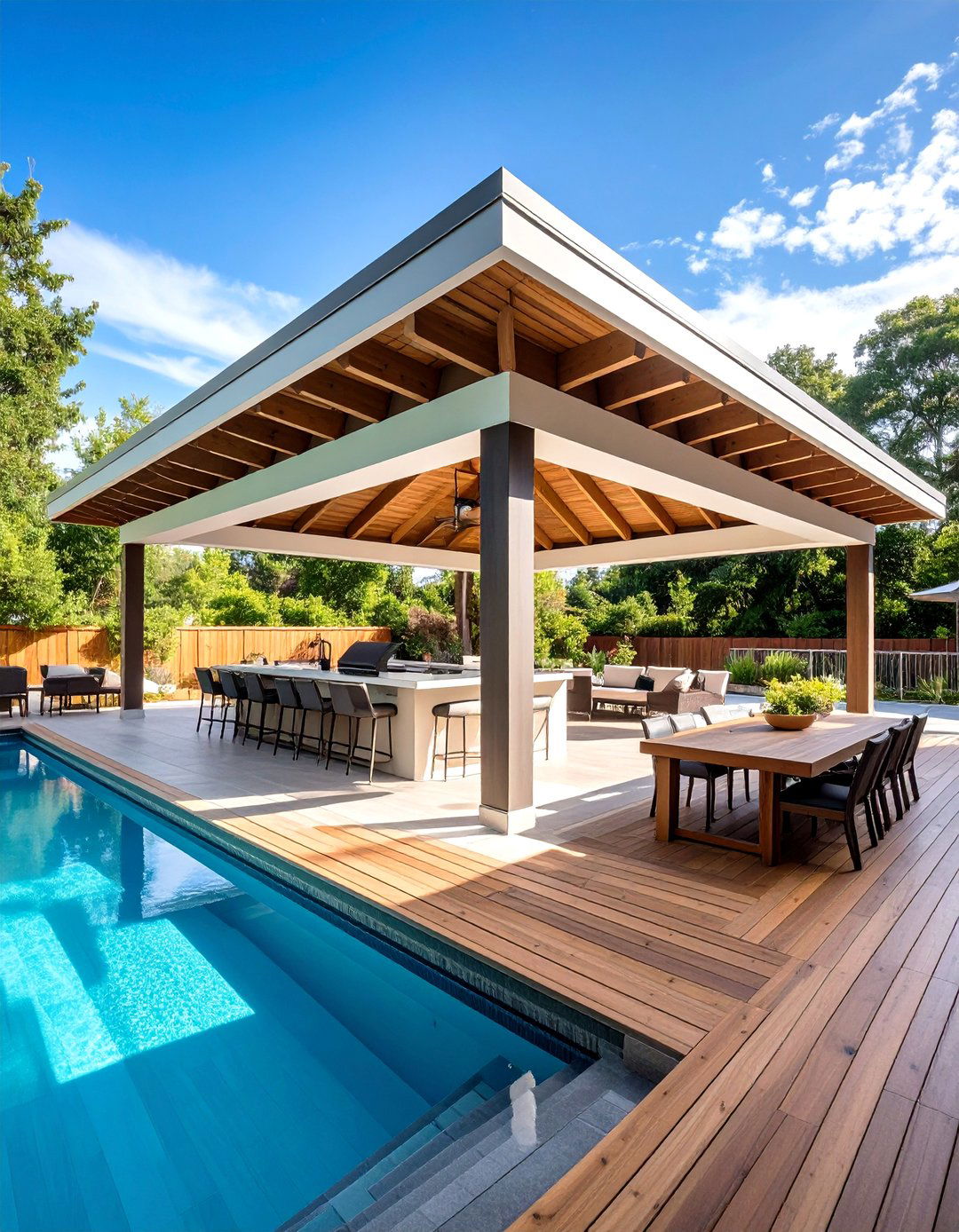

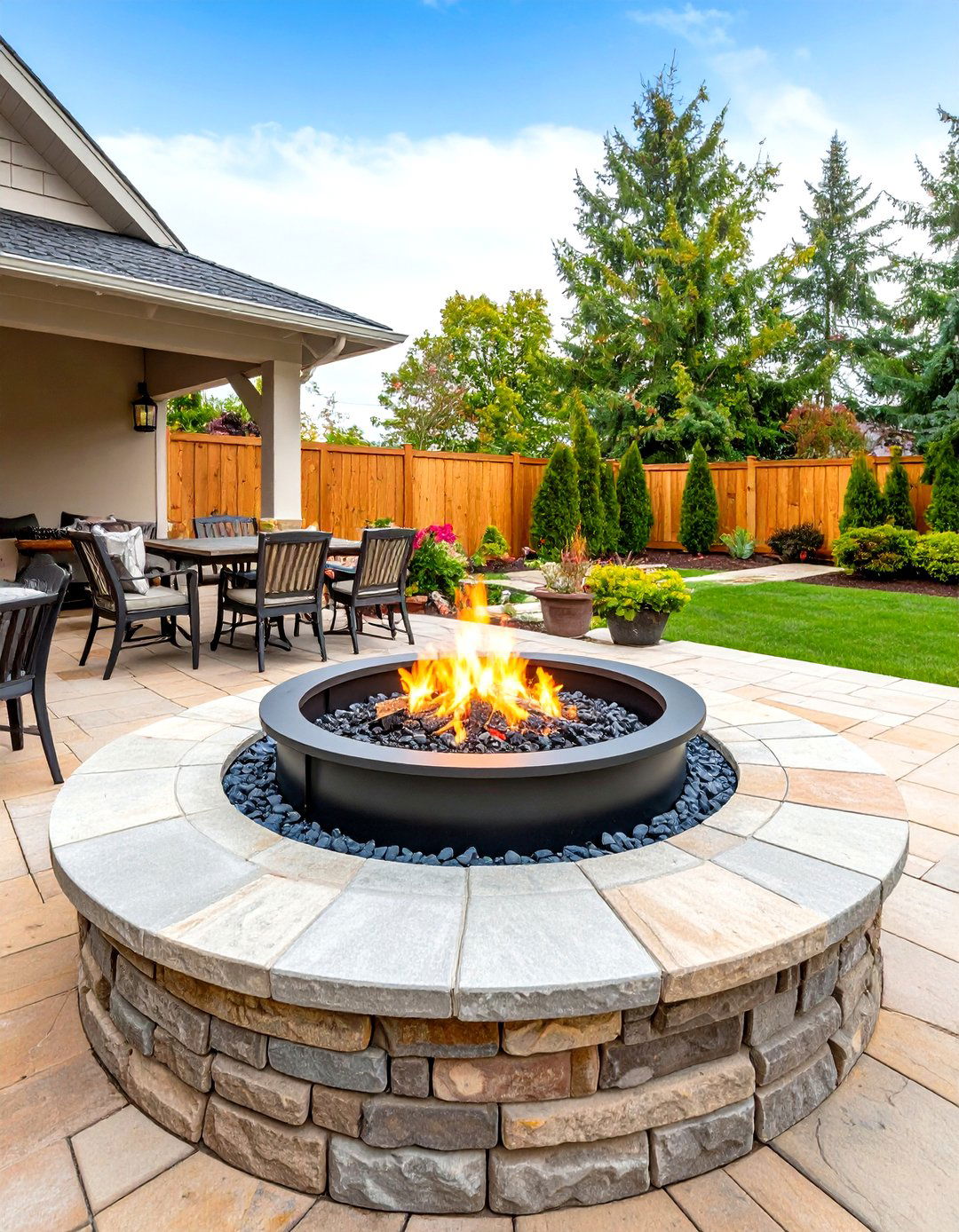
Leave a Reply